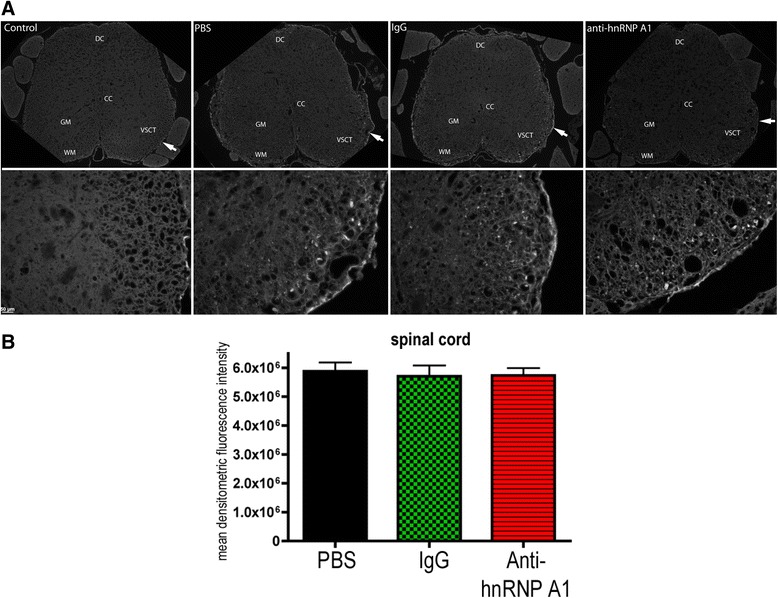Fig. 2.

Fluoro-Jade C staining of the spinal cord. a. Paraffin-embedded sections from the lumbosacral region of the spinal cord were sectioned at 10 μm. The sections were stained for neurodegeneration using the Fluoro-Jade C. There was no staining of neural elements in control (non-EAE) mice. At low power, the spinal cords from all three EAE groups showed staining that was greater in the white matter tracts than in the gray matter. High-powered images were taken from representative areas (shown by arrows in the low power view) of the ventral spinocerebellar tract (VSCT), showing similar levels of Fluoro-Jade C staining. b Quantification of Fluoro-Jade C intensity was performed on 10 images from three animals per experimental group (30 images per condition). The mean densitometric fluorescence intensity was calculated using ImageJ software, and groups were compared using the student’s t test. There were no differences in fluorescence intensity in the spinal cords of the three EAE groups. Abbreviations: PBS EAE mice injected with PBS, IgG EAE mice injected with isotype control IgG2b, Anti-hnRNP A1 EAE mice injected with anti-hnRNP A1-M9 antibodies, DC dorsal columns, CC central canal, GM central gray matter, WM white matter, VSCT ventral spinocerebellar tract
